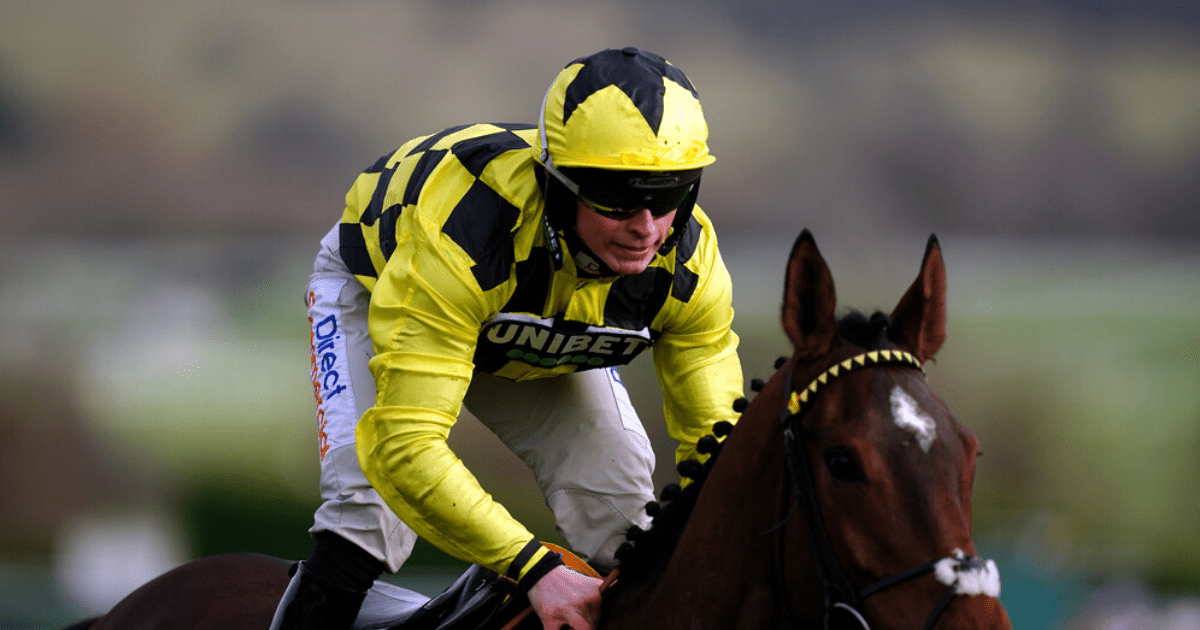Shake-ups Expected in Antepost Markets
Get ready for some major changes in the Cheltenham Festival antepost markets this weekend. With the Dublin Racing Festival at Leopardstown just around the corner, top trainer Willie Mullins is set to unleash his big guns. Brace yourself for some thrilling action!
Sir Gino: The One to Beat
When it comes to the Triumph Hurdle, all eyes are on Nicky Henderson's exciting youngster, Sir Gino. According to the racing experts at Timeform, Sir Gino delivered the best performance by a juvenile this season. His impressive win at the Finesse Hurdle on Cheltenham Trials Day earned him a Timeform rating of 143p, putting him 5lb ahead of his closest rival in the division. Will anyone be able to challenge this rising star?
An Unstoppable Force
Despite not clocking a notable timefigure, Sir Gino's strength and acceleration in the run-in have captivated analysts. Graeme North from Timeform believes that Sir Gino is a top-notch juvenile who will be tough to beat in the Triumph Hurdle. His exceptional speed and performance have left his competitors in awe, including former favorite Burdett Road. It's safe to say that Sir Gino is a force to be reckoned with!
What About the Competition?
While Sir Gino leads the betting at 11-8, Mullins' Storm Heart is not far behind at 7-1. Can Storm Heart give Sir Gino a run for his money? We'll find out soon enough.
Frequently Asked Questions
How can the safety of riders and horses be maintained during a horse race?
In UK horse racing, the safety of horses and riders are of paramount importance. To ensure high safety standards are met, racecourses must adhere to strict regulations. These include the quality and condition of the jumps as well as the track. Horses are inspected for health before and after racing, and jockeys must wear safety equipment such as body protectors and helmets. A rapid response team and veterinarians are on call to respond quickly and effectively in the event of an incident.
Are there different types horse races in Britain?
There are many different types of horse racing in the UK. They fall primarily under the categories of Flat Racing and National Hunt (or Jump) racing. Flat racing, which does not involve obstacles, is held on level tracks ranging from 5 furlongs to over 2 miles. National Hunt racing emphasizes both the speed and jumping ability of the horse, with races like hurdles and steeplechases featuring a series of obstacles. Within these two broad categories, there are also variations such as handicaps, maidens, and conditions races, each with specific entry criteria and rules.
What are the most prestigious horse racing events in the UK?
The United Kingdom hosts a number of acclaimed horse races that draw audiences from around the world. The Epsom Derby, The Grand National at Aintree and The Royal Ascot are among the most prestigious. These events not only showcase the finest equine talent but also offer rich history and tradition, and have become social occasions with distinctive dress codes and royal patronage.
What’s the meaning of jockeys’ silks?
The jockeys silks is the colorful, patterned outfit worn during racing. Each set has a unique number and is registered to a horse’s owner. This allows spectators and officials the ability to quickly identify horses in the race. Silks are often a tradition or hold sentimental value for their owners. They can be adorned with a variety colors, patterns, and symbols.
What does it really mean when a race horse is called a “stayer?”
In racing terms, a ‘stayer’ is a horse that excels in racing over long distances. These distances typically exceed a mile and four-furlongs. Stayers are required to have both speed and endurance, in order for them to maintain a high pace throughout long races. Renowned stayers are often seen competing in long-distance events such as the Ascot Gold Cup.
What are ‘Classics’ in UK horse racing?
The term ‘Classics,’ used in UK horseracing, refers to a group of five prestigious races which are considered by many to be the most prestigious contests for 3-year-old thoroughbreds. The 2,000 Guineas are the Epsom Derby, The Epsom Oaks and The St. Leger Stakes. It is an impressive achievement to win one of these Classics. To win all three races for a particular gender (either The Triple Crown for colts or The Triple Crown For fillies) is also a historic feat.
Statistics
- The Grand National at Aintree boasts a prize fund of around £1 million, making it the most valuable jump race in Europe.
- Approximately 6 million people attend horse racing events in the UK each year, making it the second most popular spectator sport in the country.
- Around 14,000 thoroughbred foals are born each year in the UK with the goal of becoming top racehorses.
- British horse racing generates over £350 million in annual tax revenues for the UK government.
- The annual Cheltenham Festival has an economic impact of over £100 million for the local Gloucestershire economy.
- There are over 8,000 active racehorse owners in the UK, ranging from royals to common citizens.
External Links
racingtv.com
thejockeyclub.co.uk
britishhorseracing.com
racingpost.com
ascot.com
betfair.com
How To
How to Read a Racecard for UK Horse Racing
A racecard is a valuable tool for horse racing. It includes information about the horse, its number, colors of the jockeys’ silks, drawing numbers, form figures and weight carried by trainers and jockeys. Form figures indicate the performance of a recent race, with numbers representing positions and letters indicating why a particular horse did not finish. Weight carried can be a handicap weight, or the weight set in weight-for age races. Understanding this information can help with predicting race outcomes and selecting bets. Familiarize yourself with these symbols and terms to advance your racing knowledge.

